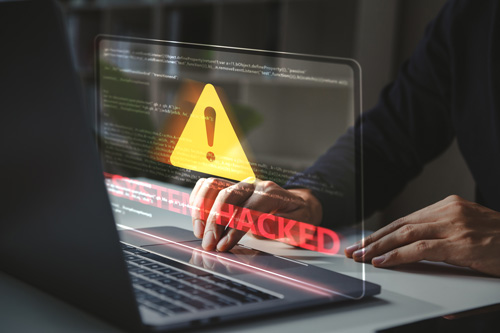Restoring data after a ransomware attack: your survival guide
Everything you need to know to recover and secure your information after a ransomware attack.
What to do in case of ransomware? - Restoring data after a ransomware attack: your survival guide
Imagine yourself in a situation where your most important data is suddenly inaccessible, held hostage by malicious software. Ransomware is not just a modern-day nightmare, it’s a palpable reality for thousands of individuals and businesses. But what to do when faced with such a crisis?
From recovery strategies to tips on how to avoid falling back into the trap, let’s take a look at concrete steps to regain control of your information, effective data recovery strategies, and how to prevent future attacks.
From decrypting files to having your systems restored by data recovery professionals, each step is a step towards regaining security. Prepare yourself to turn a crisis situation into a story of resilience, and strengthen your arsenal against the threats of cybercrime.
*** Translated with www.DeepL.com/Translator (free version) ***
Recognizing and reacting to an attack
When a ransomware attack is detected, your reaction must be swift and determined. The first critical measure is to immediately disconnect all devices from the network. This preventive action is essential to limit the spread of ransomware to other, non-compromised systems and data. Imagine containing a water leak in a house to prevent it spreading to every room. Similarly, isolating affected devices prevents ransomware from spreading further into your network.
Early recognition of the signs of a ransomware attack, such as the inability to access your files or the appearance of messages demanding ransom, is vital. These first moments after the detection of an attack are often decisive for successful data recovery and damage minimization. By acting quickly, you can limit damage and increase the chances of recovering data and restoring affected systems.
Assessing the extent of damage
Once the attack has been identified, it’s time to assess the extent of the damage. What data has been encrypted? Are backups available? It’s essential to determine what data has been compromised, and whether backups are available. This assessment will enable you to understand the full impact of the attack on your systems and data, and to draw up an effective recovery plan.
This thorough inspection includes examining available backups, checking their integrity, and considering the current state of files affected by the ransomware. It’s also important to determine whether backups have been infected by the ransomware, as this could compromise data recovery.
This is when you’ll be able to decide on the best options for restoring your data. If backups are available, they become an invaluable resource for restoration. If backups are absent or compromised, you may need to explore other recovery methods, such as the use of decryption tools or the assistance of data recovery professionals.
This diagnostic phase is essential, as it guides all subsequent actions and greatly influences the chances of successfully recovering your essential data. It must be carried out with rigor and care, as it determines not only the immediate possibilities for data recovery, but also the security measures to be reinforced to prevent future attacks.
Data recovery strategies after a ransomware attack
1. Restoring data from backups
Now let’s move on to recovery. If you have backups, now’s the time to use them. No backups? Don’t panic, there are data recovery tools that can come to your rescue.
The recovery stage after a ransomware attack is essential and delicate. If you have reliable backups, they’re your greatest asset, and their use should be a priority, as they’ll be your lifeline. However, you need to restore these backups in a secure environment, cleaned of all traces of malware, to prevent reinfection.
This restoration must be carried out with care, ensuring that the ransomware has been completely removed from the system to prevent the backups from being compromised as well. This often involves reinstalling operating systems and ensuring that all security holes are plugged before proceeding with data restoration.
2. Data recovery in the absence of backups
In the absence of backups, the situation is more complex, but not hopeless. Fortunately, there are professional tools and services specialized in recovering data after a ransomware attack. These services offer solutions ranging from file decryption (if software is available) to more advanced, customized methods for recovering encrypted data. Bear in mind, however, that these solutions may not guarantee complete data recovery, and their success often depends on the nature and complexity of the ransomware involved.
These professionals can also offer advice and support to strengthen system security after recovery, helping to prevent future ransomware attacks. Data recovery without backups is a delicate process, often requiring specialized expertise and a customized approach for each unique situation.
Businesses and individuals alike need to be prepared for the possibility that some data may be irrecoverable, and aware of the importance of maintaining regular backups to guard against future data loss.
Rebuilding systems compromised by ransomware
Following a ransomware attack, the reconstruction phase of compromised systems is just as important as data recovery. Eliminating all traces of the ransomware is absolutely essential to ensure the security of your systems. This clean-up process involves a thorough analysis and complete reinstallation of affected systems to ensure that no malicious elements remain.
Think of this step as a thorough disinfection process, where every nook and cranny needs to be carefully cleaned to prevent re-infection. It often requires the expertise of cybersecurity professionals, as ransomware can hide in system files or backups.
Once cleanup is complete, system reinstallation begins. This often involves reinstalling operating systems, applications and configuration files. Throughout this process, particular attention must be paid to securing systems against future attacks. This can include updating software to plug security holes exploited by the ransomware, and installing enhanced security solutions. The aim is to make the system more resistant and less susceptible to future ransomware attacks or other types of cyberattack. Particular attention must be paid to the security of data entry and exit points, as well as to the implementation of effective intrusion detection and prevention systems.
And don’t forget that reintegration must be accompanied by a rigorous verification process, ensuring that the data being reintegrated is clean and secure. It’s a process that requires both technical precision and security vigilance. Reintegrating your data is the cornerstone of a successful recovery, enabling you to re-establish a secure working environment.
SOS ransomware a specialized Recoveo service
Put your trust in data recovery No. 1
Present 24/7, our cybersecurity experts are at your side, to help you overcome a ransomware incident within your organization. We’ve been the leader in data recovery in France for over 20 years. We have already rescued over 100,000 storage media.

Strengthening security and preventing ransomware attacks
After overcoming a ransomware attack, it’s imperative to strengthen your IT security to guard against future incursions. This consolidation phase is comparable to fortifying a citadel after a breach. Installing advanced firewalls and robust anti-malware solutions is the first line of defense. These tools act as sentinels, monitoring and protecting your systems against malicious intrusions.
Continuous monitoring is another central pillar of this defense strategy. It involves constant vigilance, not only to detect threats, but also to ensure that the security measures in place are working effectively. Regular security updates also play a key role, ensuring that your system is protected against the latest tactics and vulnerabilities exploited by cybercriminals.
In addition to technical measures, prevention also involves an important human component. Setting up regular backups is an essential step, enabling rapid recovery in the event of a new attack. These backups should be seen as a safety net, ready to be deployed to restore the integrity of your data should the need arise. These backups must be made frequently and stored securely, preferably off-site or in the cloud, to ensure their integrity even if the main system is compromised.
Finally, user training and awareness of cybersecurity threats are essential. Informed, well-trained employees are less likely to fall into cybercriminals’ traps, such as phishing or malicious links. Think of this training as a regular training program, strengthening your organization’s human defenses against future threats. A proactive approach to IT security is the best strategy for ensuring the safety of your data and the continuity of your business.
Recovering data after a ransomware attack requires diligence and caution. Rebuilding systems, strengthening security and strategic planning for prevention are key steps. Stay vigilant and proactive. With the right practices, you can not only recover from an attack, but also strengthen your defenses for the future.
Prevention remains the key. Implement regular backups and robust security measures. As they say, prevention is better than cure!
Adopt the right reflexes...
What to do in case
of ransomware?
We have over 20 years’ experience in data recovery. Call on the French leader, our expertise enables us to provide you with a top-level response.

What are the emergency measures in the event of a ransomware attack?
The first steps to take in the face of ransomware

Who should I contact in the event of a ransomware attack?
All the steps to take after an infection

What can you do to counter the attack and recover your data?
Restoring data following a ransomware attack